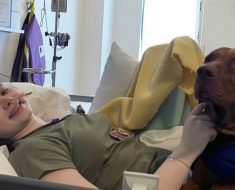
Over the last decade, severe bacterial infections associated with intravenous drug use have been increasing in frequency in the U.S. Many studies examine the injection risk behaviors associated with transmission of HIV and hepatitis C but few delve into the causes of severe bacterial infections among people who inject drugs.
To fill this gap, CUNY SPH Associate Professor Pedro Mateu-Gelabert and Drs. Alexander Hrycko and Benjamin Eckhardt of the New York University School of Medicine conducted a qualitative study to identify the risk factors associated with severe bacterial infections in hospitalized individuals with recent injection drug use.
The researchers led a qualitative analysis using an in-depth, semi-structured interview of participants admitted to Bellevue Hospital with severe bacterial infections and recent history of injection drug use. Participants were identified through a referral from either the Infectious Diseases or Addition Medicine consultative services. Interviews were transcribed, descriptively coded, and analyzed for key themes.
Participants reported a basic understanding of prevention of blood-borne viral transmission but limited understanding of the risk of severe bacterial infections. Participants described engaging in high-risk injection behaviors prior to their hospitalization, including polysubstance use, repetitive tissue damage, using nonsterile water to dilute drugs, lack of hand and skin hygiene, and re-use of injection equipment.
The researchers propose an Ecosocial understanding of severe bacterial infection risk, detailing the multi-level interplay between individuals and their social and physical environments in producing risk for negative health outcomes.
“The participants conveyed their lack of basic knowledge regarding bacterial infections and how to prevent them despite using harm reduction services and prior lengthy hospitalization for similar infections,” said Mateu-Gelabert. “Homelessness, polysubstance use, poor injection site hygiene, and high frequency of drug injections, often reusing the same syringes, exacerbates their risk.”
The researchers highlight how repeated non-sterile injections lead to cumulative damage to the skin and soft tissue facilitating the introduction of harmful bacteria into the body.
“Visual track marks, localized bacterial infections and abscesses are early signs of potential risk for life threatening bacterial infections,” says Mateu-Gelabert. “Facilitating steady access to non-stigmatizing primary care for people who inject drugs would go a long way in preventing lengthy hospitalizations while saving lives and money.”
Source: Read Full Article





